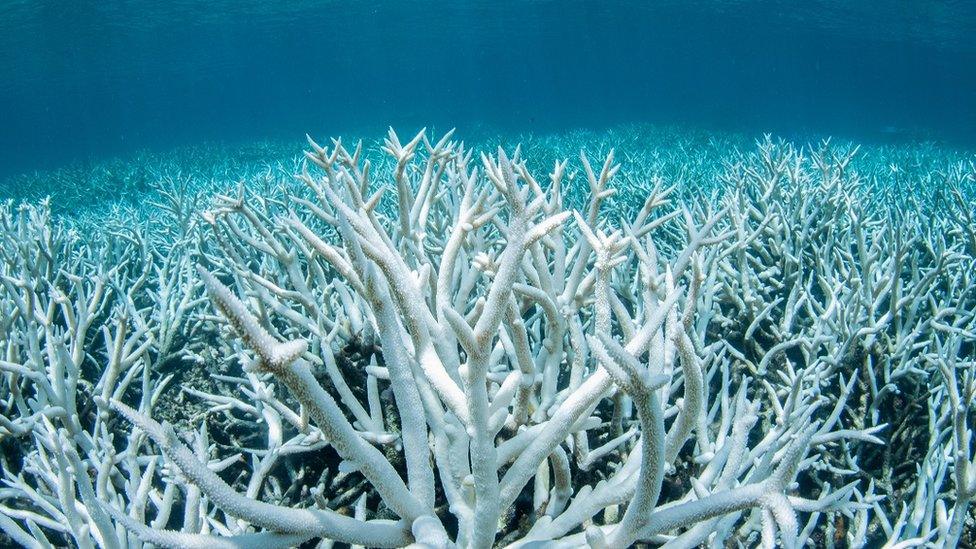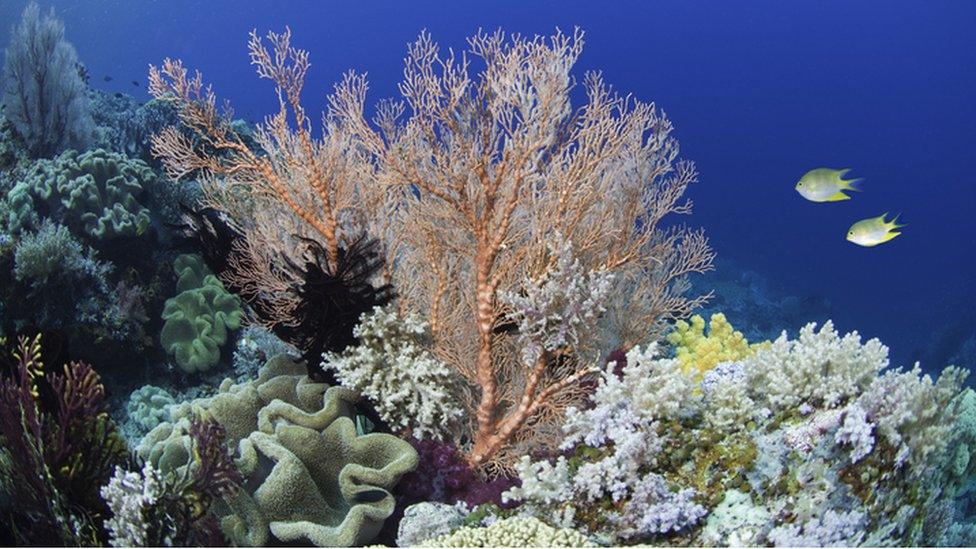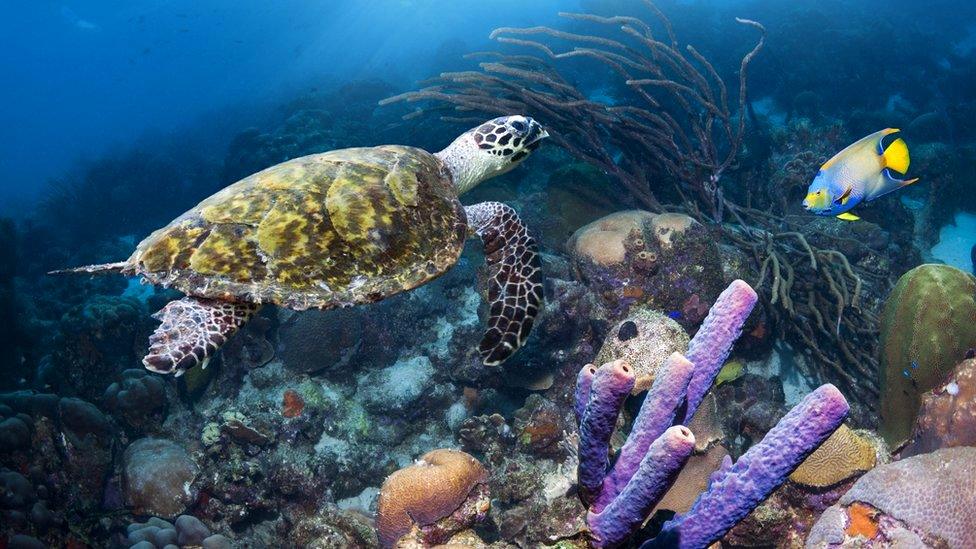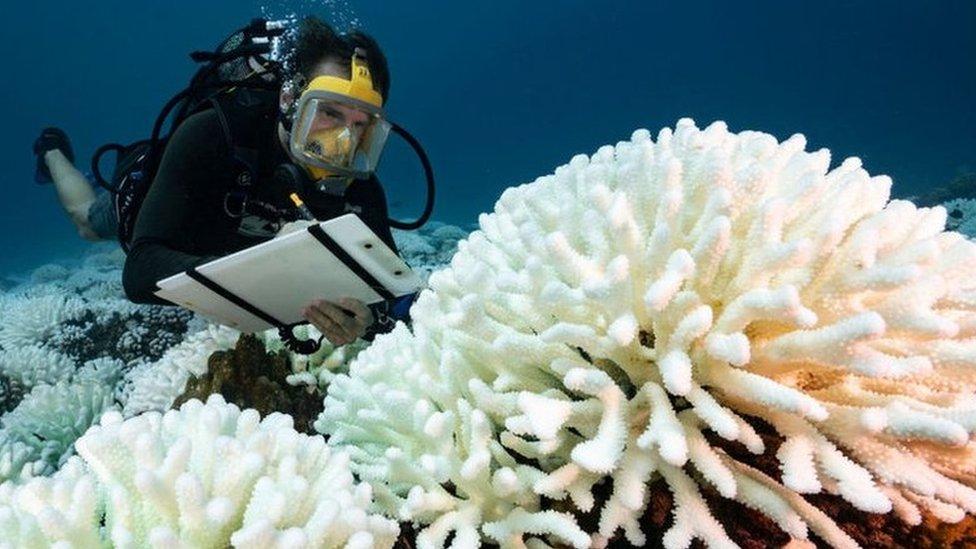Sunscreen contains chemical which can be harmful to corals
- Published
- comments

Lots of people use sunscreen during the warmer months which can end up washing off they swim in the sea
Corals, which are made up of lots of little marine animals known as polyps, face a number of different threats.
This includes coral bleaching, pollution from things like microplastics and rubbish which ends up in our oceans, and physical damage caused by humans.
Sunscreen, which many people use to protect themselves during the warmer months of the year, has also proven to be damaging to corals.
Up to 6,000 tonnes of the cream are believed to wash through US reef areas every year, according to America's National Park Service.

Coral bleaching is a big issue affecting the species
For a long time, scientists have known that a common chemical in some sunscreens, called oxybenzone, isn't good news for corals. However, up until now, exactly why this is such a big problem for the sea creatures was largely unknown.
Now, researchers at Stanford University have discovered why sunscreen can pose such a threat to corals.
For the study, the scientists used sea anemones which are very similar to corals but less difficult to experiment with, as well as mushroom corals.
The anemones were placed in controlled conditions. They were exposed to the chemical oxybenzone in artificial seawater, in addition to artificial sunlight. All the anemones died within 17 days.
On the other hand, anemones which were exposed to oxybenzone but without the simulated sunlight stayed alive.
The scientists found that being exposed to sunlight caused the anemones to change the oxybenzone so it dissolved in water by combining it with sugars, but this process turned the chemical into a toxic substance.

Sunscreen can be damaging to corals
"It was strange to see that oxybenzone made sunlight toxic for corals - the opposite of what it is supposed to do," said William Mitch who is a professor of civil and environmental engineering at Stanford.
After absorbing ultraviolet light so that our skin doesn't burn, oxybenzone is meant to scatter the remaining light energy as heat away from our skin, which prevents sunburn. However, in this case, the chemical plus the presence of sunlight caused damage to the anemones and corals.
The researchers fear there may be other ingredients in sunscreen which could also be harmful to corals, many of which have similar properties to oxybenzone.
The scientists hope to look into the impact sunscreen has on corals further.
- Published7 December 2020

- Published9 April 2020

- Published25 March 2022

